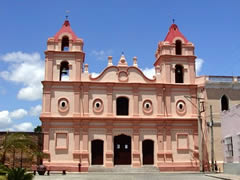Camaguey is one of the Cuban colonial cities that best preserves its historical center
- Submitted by: admin
- Editorial Articles
- Culture and Traditions
- 10 / 13 / 2006

Although it is located in the center of the province of the same name, it was not always there. The foundation of the Santa Maria del Puerto del Principe town, todays Camaguey, one of the first towns established by the Spanish conquerors, took place in the northern coastal area in a place called Puerto Guincho. This happened on February 2nd, 1514. The term Camaguey came from the native word Camagueybax, the name of a native chief. The adverse geographical conditions and the harassment of corsairs and pirates caused that this community moved inland towards the bank of Caonao river. Later, the native resistance to this environment caused a new move to the confluence of Tinima and Hatibonico rivers, located at the central area of the province where today we can find one of the largest cities of Cuba.
The historical center of the city covers an area of 330 hectares, 316 blocks, 12 squares, 18 small squares, an urban park and the El Casino Campestre of 8 hectares of extension, and more than 58 hundred inhabitants. Maybe, the lack of urban regulations during the years of its construction brought about the maze formed by the routes of this part of the city and we can find there from the shortest to the narrowest street of the country. Among them, there two prized architectonical sites: El Carmen and San Juan de Dios.
One of the symbols of the city is the large earthenware jar, it is said it was created in the first years of the town foundation, when the region went through a great drought. The Spanish conquerors transmitted to the other inhabitants their experience in the Andalusian land where the olive oil was stored in similar containers. This was favored also by the richness of the clayey land around there that offers high quality clay. The model of the Andalusian earthenware jar was adapted to the Creole needs for the preservation of cold water. According to the legend, the stranger who drinks water from the earthenware jar will stay forever in Camaguey.
The national poet Nicolas Guillen was born in this city as well as the eminent scientist Carlos J. Finlay, the discoverer of the transmitting agent of the yellow fever. Also, Luis Casas Romero, the father of the Cuban radio, the major general Ignacio Agramonte y Loynaz, one of the most beloved leaders of the independent war, Gertrudis Gomez de Avellaneda, the author of the first abolitionist novel in Cuba among other outstanding figures of the History of the island were born there.
This land has also the honor of having one of the first TV channels in Cuba and the second ballet company of the country. Besides, one the first of the largest transatlantic flights in aviation history landed in this city in the year 1933 from Sevilla with the Spanish pilots Barberan and Collar.
Comments